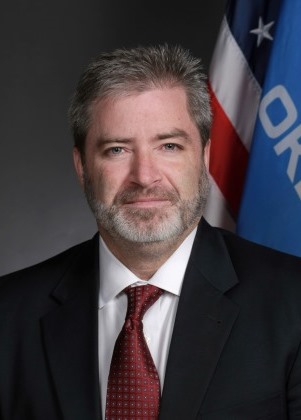In order to provide equal access and equal opportunity to people with diverse abilities, this site has been designed with accessibility in mind. Click here to view
Senate committee examines Medicaid reform
 Sen. Rob Standridge
Sen. Rob Standridge
Members of the Senate Appropriations Subcommittee on Health and Human Services on Wednesday heard from key figures in successful Medicaid reforms efforts in Georgia, Kansas, and North Carolina. Requested by Sen. Rob Standridge, the interim study closely examined systems implemented to improve health outcomes and establish fiscally sustainable systems for Medicaid management.
Standridge said the soaring cost of Medicaid spending in Oklahoma can’t be contained under the current program. Medicaid spending accounted for 13.3 percent of the state budget in 2013, up from 6.7 percent in 2000. Standridge noted the recent announcement that Oklahoma will receive fewer federal matching funds for Medicaid stands to push those costs even higher, threatening the state’s ability to adequately fund other sectors of government.
“The system simply isn’t configured in a way that can control costs and provide budget predictability. This is particularly problematic because it imperils a program that provides care for so many underserved Oklahomans,” said Standridge, R-Norman. “Our ultimate goal is to strengthen Medicaid so it can better meet the needs of patients. After this week’s meeting, I feel we have a much better understanding of how proven reform models can maximize resources to produce better results.”
Presenters Carol Steckel of North Carolina, Mark Trail of Georgia, and Kansas Lt. Gov. Jeff Colyer were directly involved with the implementation of managed care models for Medicaid in their respective states. Under the systems, the states contract with managed care organizations to provide services to Medicaid enrollees.
Colyer noted KanCare, Kansas’ new system for administering Medicaid, features a dynamic integrated care model. This approach, he said, has improved coordination between providers, patients and the state to ensure entities are working toward the shared goal of improving health outcomes.
Colyer said KanCare is expected to save Kansas $1 billion over the next five years. The program has also generated an additional $150 million in savings in its first year, which the state may use to expand services for people with disabilities. KanCare now allows Medicaid to cover life-saving procedures like heart and lung transplants.
Standridge said reforms that emphasize better health outcomes can help control costs simply by helping patients get healthier.
“Reforms implemented in each of these states show that when we incentivize better performance, health outcomes improve. In turn, this controls costs by reducing the need for repeated hospital visits,” he said. “A feature of each successful reform has been the expansion of choices for patients, allowing enrollees to choose the care that best suits their needs. Reforms like this can help people get the kind of care they need more efficiently, which must be prioritized for Medicaid to better serve the needs of Oklahomans.”
 Oklahoma Senate
Oklahoma Senate

